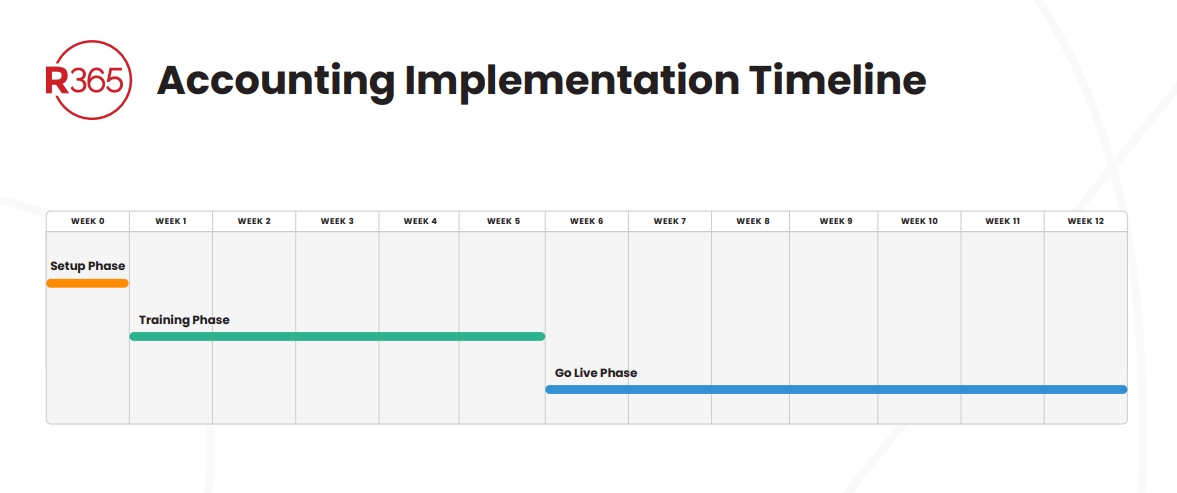
I Am a New Restaurant Business and Plan on Using R365 — When Is the Optimal
Time to Start My Implementation?
by John Laporte, President, RRFMG Technology Services
A growing trend among new restaurant businesses and franchisees is the early purchase of Restaurant365 (R365) before they are fully prepared to begin implementation. The excitement is understandable — R365 is a powerful all-in-one platform that offers integrated accounting, operations, and workforce management designed specifically for the restaurant industry. But while enthusiasm is an asset, timing and preparation are everything when it comes to a successful implementation.
So the question becomes: When is the right time to start implementing R365 if I'm a brand-new restaurant business or franchisee?
The answer isn't just about your level of excitement or even your funding — it's about whether the foundational pieces of your business are in place. Jumping in too early can cause unnecessary stress, create rework, or lead to a failed implementation. Let's take a deeper look at what "being ready" really means and how to optimize the timing of your R365 implementation.
The Most Fundamental Starting Point

If you are a brand-new business or franchisee, chances are you don't yet have a physical restaurant location. You might not have a POS system, vendors, invoices, or even a team. So where do you begin when trying to implement a system as robust as R365, which is designed to manage ongoing business operations?
The most fundamental elements you need before beginning your R365 implementation are:
- A business bank account
- A legal business entity
- A dedicated internal resource to work with your R365 onboarding coach
- A realistic business plan with a projected restaurant opening within the next 90 days
Why 90 days? Because that’s the typical duration of an R365 implementation. The process consists of weekly one-hour calls with your onboarding coach, each one building upon the last. If your restaurant is not scheduled to be operational within that window, your implementation will likely stall or veer off track.
What an R365 Implementation Actually Involves
Many clients assume R365 is plug-and-play, but it's actually a structured process with weekly milestones and required preparation. Each week introduces new topics, homework assignments, and configurations that build toward your full operational readiness. Here's a breakdown of what you'll be doing:

1. Chart of Accounts Setup
The first task is establishing your Chart of Accounts (COA). R365 comes pre-loaded with the National Restaurant Association (NRA) standard COA, but not every business needs all of it. For example, a doughnut shop may not need GL accounts for liquor, beer, or wine. These can be removed. Conversely, you might need to add accounts specific to delivery platforms or eCommerce revenue streams. Customizing your COA to reflect your business model is foundational to accurate reporting.
2. Entity and Location Configuration
Next, you’ll need to set up your legal entity in R365, input your physical addresses (office and future restaurant), and decide on your fiscal year structure. Most restaurants choose from a calendar year, 13-period, or a retail 4-4-5 structure, depending on how they want to track performance and manage reporting cycles.
3. Banking and Financial Setup
You’ll link your bank accounts and begin practicing basic accounting workflows such as posting journal entries, tracking bank activity, and managing invoice payments. Even before your restaurant opens, you’ll likely incur expenses related to design, construction, permits, and pre-opening marketing. Getting these into R365 early gives you visibility into pre-opening costs and ensures nothing falls through the cracks.
4. Vendor and Budget Planning
As your build-out progresses, you’ll begin adding vendors and suppliers into the system. Contractor invoices, kitchen equipment purchases, design services, and IT vendors can all be tracked and categorized. You can also start establishing a pre-opening budget to monitor spend against forecast. This is a great way to get comfortable with R365’s budget management tools before the daily restaurant operations kick in.
The Importance of a Dedicated Implementation Resource

One of the most overlooked ingredients for a successful R365 launch is having a dedicated team member — preferably someone with basic financial literacy and project coordination skills — to work hand-in-hand with your onboarding coach. This person is responsible for completing tasks between weekly calls, asking questions, and ensuring your configuration matches the way your business will operate.
When this role is not clearly defined or the person assigned to it is stretched too thin, the implementation can get delayed, misconfigured, or even abandoned. A good rule of thumb: if your team is not yet assembled or you don’t have a point person for implementation, hold off until you do.
When to Hit Pause

Not every new restaurant is ready to begin implementation right away — and that’s okay. Here are clear signs that it’s too early:
- Your restaurant is more than 90 days from opening
- You don’t have a legal entity or tax ID
- Your business bank account isn’t yet established
- You lack a clear and realistic opening plan
- You don’t have a team member available to manage the onboarding
Starting prematurely will only result in wasted time and frustration. R365 is a powerful system, but its power comes from structure, data accuracy, and process integration. You’ll get much more value out of the platform if you begin your implementation when the core elements of your business are in place.

When It’s the Right Time to Begin
So, when is the optimal time to start your R365 implementation?
You should begin when:
- You’ve established your business entity and bank accounts
- You have a realistic opening timeline within the next 90 days
- You’ve chosen your POS and food vendors
- You’ve assigned a dedicated internal resource to work with your coach
- You are ready to engage in weekly calls and complete between-call tasks
At this point, your R365 implementation will align perfectly with your business development cycle. You’ll be able to input real data, track your spend, test accounting flows, and hit the ground running the moment your doors open.
The Payoff
Once your restaurant opens and your POS system is integrated, R365 becomes an incredibly valuable tool. Sales, labor data, and invoices flow in automatically. You can track costs in real-time, manage payroll, reconcile bank accounts, and generate financial reports — all from a single platform. You’ll feel in control of your restaurant’s financial health from day one.

But that kind of payoff only comes when the system is implemented thoughtfully, with the right timing and preparation. Rushing in without a plan will almost certainly compromise your results.
Final Thoughts
Restaurant365 is not just software — it’s an operational framework for running a data-driven, efficient restaurant. As a new business owner, the best time to begin implementation is when you are 90 days out from opening and have the core building blocks in place. Waiting until you’re ready isn’t a delay — it’s a strategic decision that sets you up for success.
Be realistic, be prepared, and make the most of your investment by starting your R365 implementation at the right time. Your future self — and your bottom line — will thank you.
